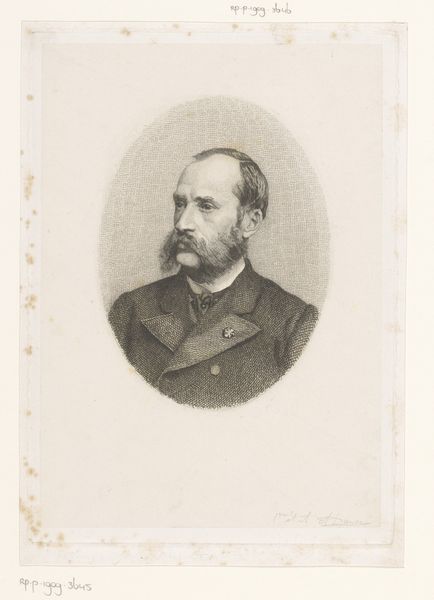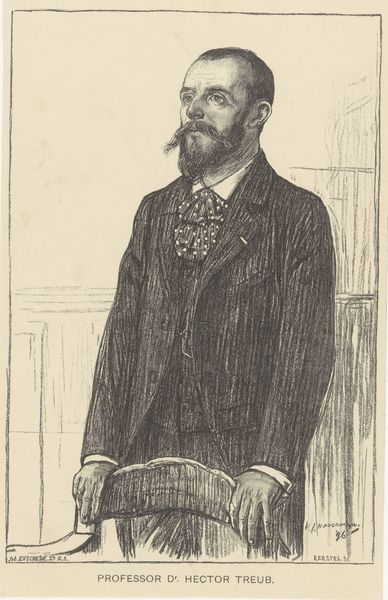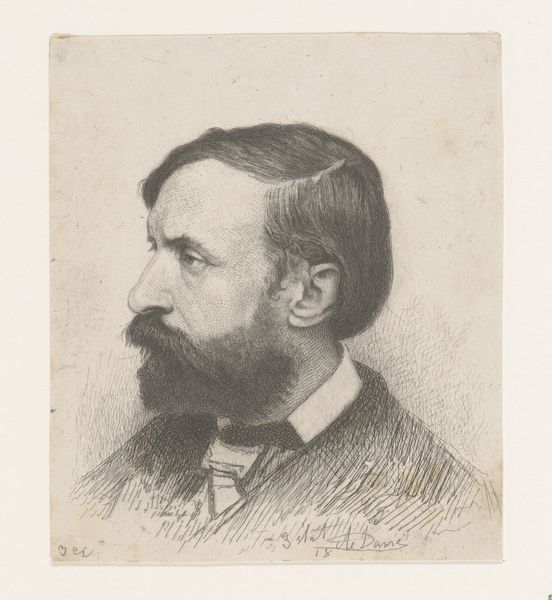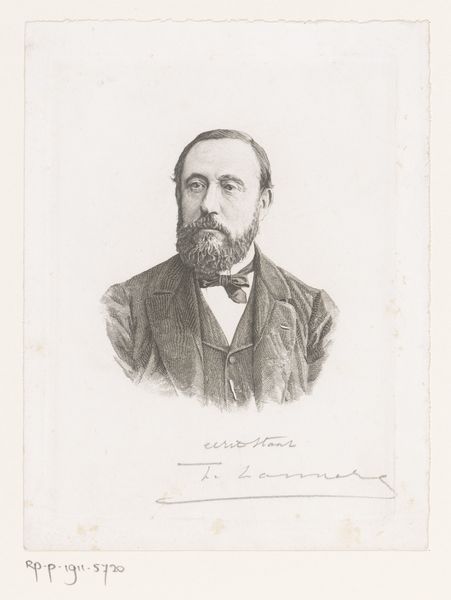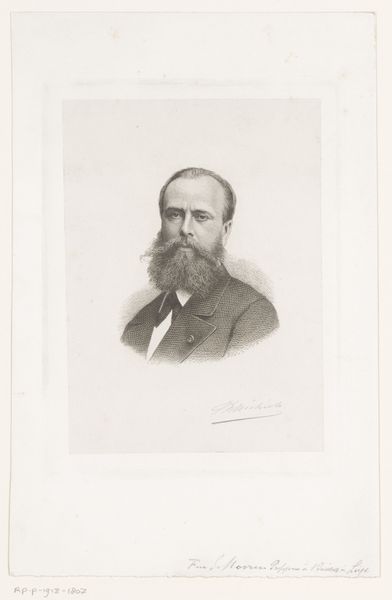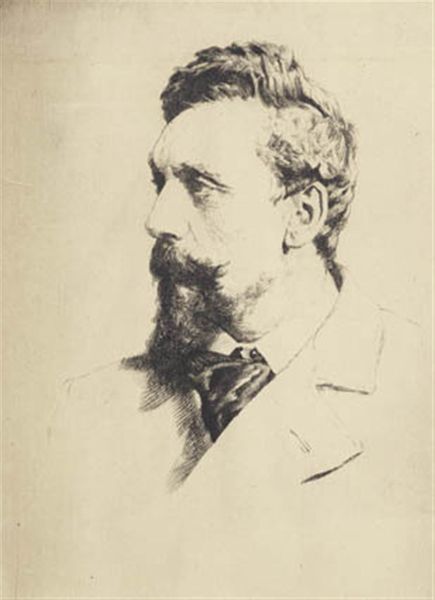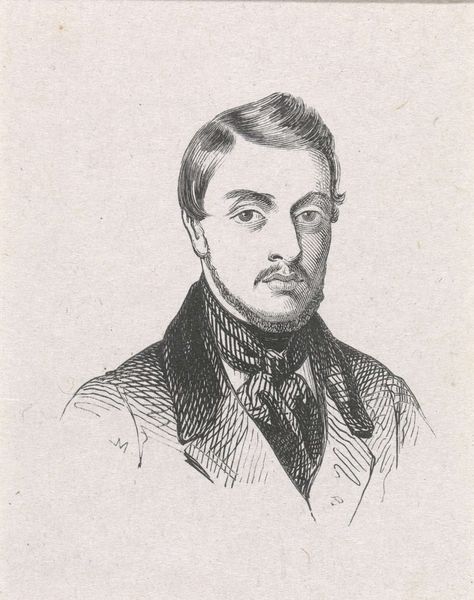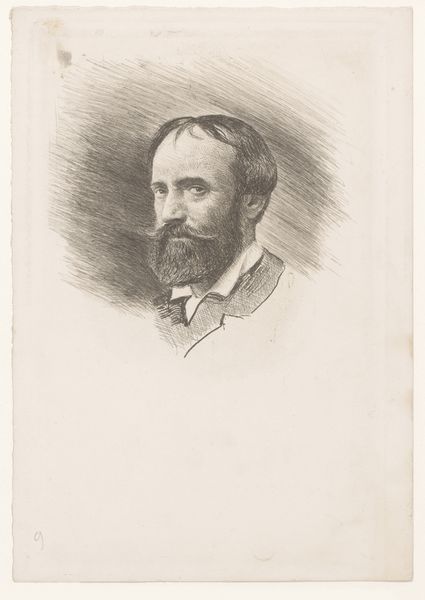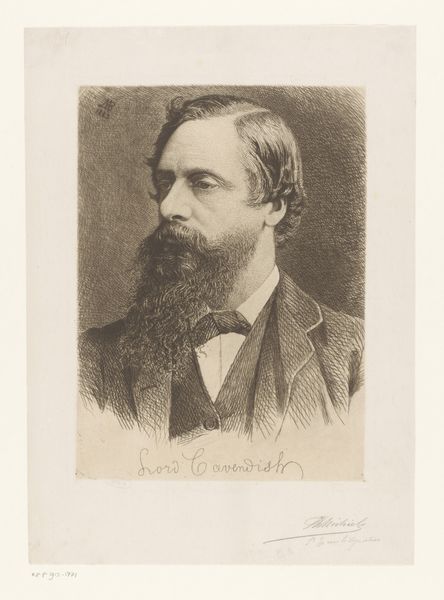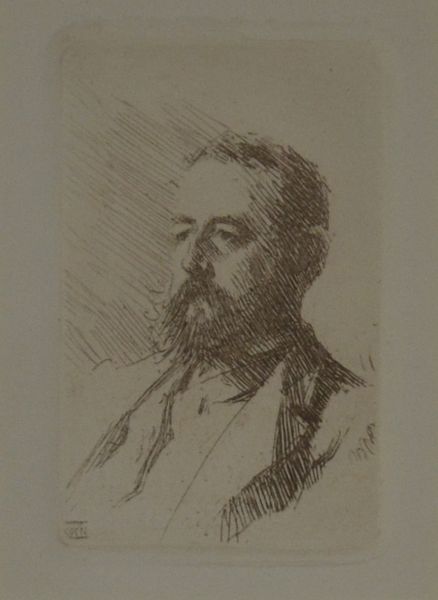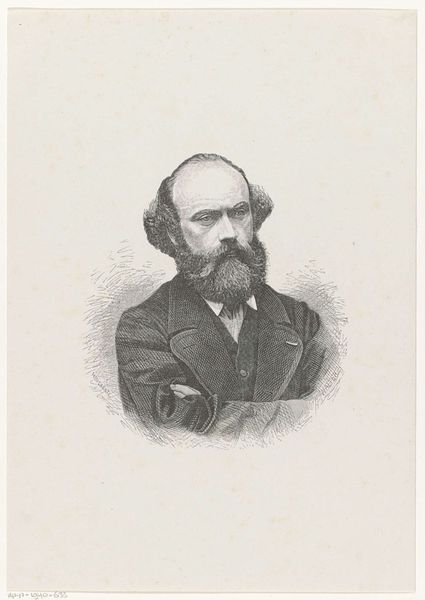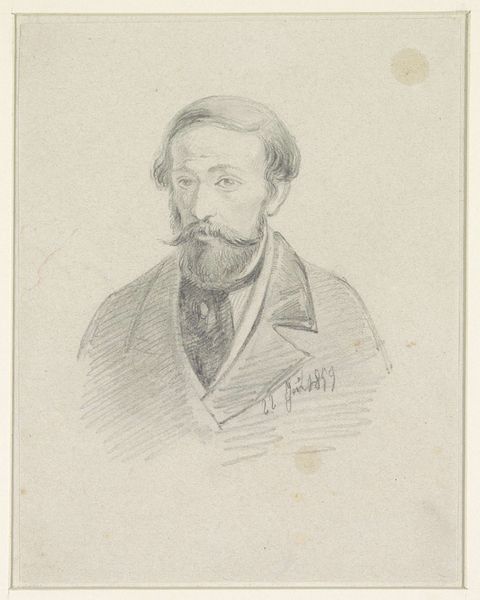
drawing, pencil
#
portrait
#
drawing
#
pencil drawing
#
pencil
#
portrait drawing
#
realism
Dimensions: height 89 mm, width 78 mm
Copyright: Rijks Museum: Open Domain
Curator: Up next, we have a striking portrait rendered in pencil. It’s entitled "Portret van Félix De Vigne," dating from circa 1819 to 1876, and it’s attributed to Coenraad Hamburger. Editor: My immediate impression is of intense scrutiny. The lines are so precise, they almost vibrate with contained energy. It feels like an interrogation, doesn't it? Curator: Absolutely. The artist's evident skill with the pencil allows for an almost photographic realism. We can practically feel the texture of his coat, and the light seems to catch the individual hairs of his beard. Consider also the labor, the sheer hours invested in layering those delicate pencil strokes to build up such volume. Editor: But it's more than just skillful rendering; it's about the power dynamic at play in portraiture. The direct gaze is loaded, holding a confidence. De Vigne clearly wanted to project a specific image. The careful grooming of his hair and beard contributes to a very specific cultural aesthetic and its subtle implications. Curator: I see your point about the intentional self-presentation, definitely reflecting ideals of the time. However, what stands out to me is how humble the means of creation are – simply pencil on paper, yet it achieves such impressive realism. What sort of statement about artmaking does it make? How does it disrupt traditional hierarchies of artistic materials? Editor: Well, portraits often served as emblems of power, immortality, and legacy. Beyond surface appearances and class signifiers, it taps into deep human desires for remembrance. Consider the portrait’s cultural currency—a face persisting through time, echoing in memory. Curator: Very well said. So, we might consider the cultural status of the sitter alongside the method of creating the piece itself. To bring the means of production back to the conversation here: did Hamburger elect to portray De Vigne via a method with fewer "high art" associations to perhaps democratize the moment, in effect? Editor: Perhaps! Considering what we’ve seen today, it has added further depths to how I perceived it earlier. Curator: I concur entirely. The symbolism blended with its artful crafting—it’s been quite thought-provoking.
Comments
No comments
Be the first to comment and join the conversation on the ultimate creative platform.
